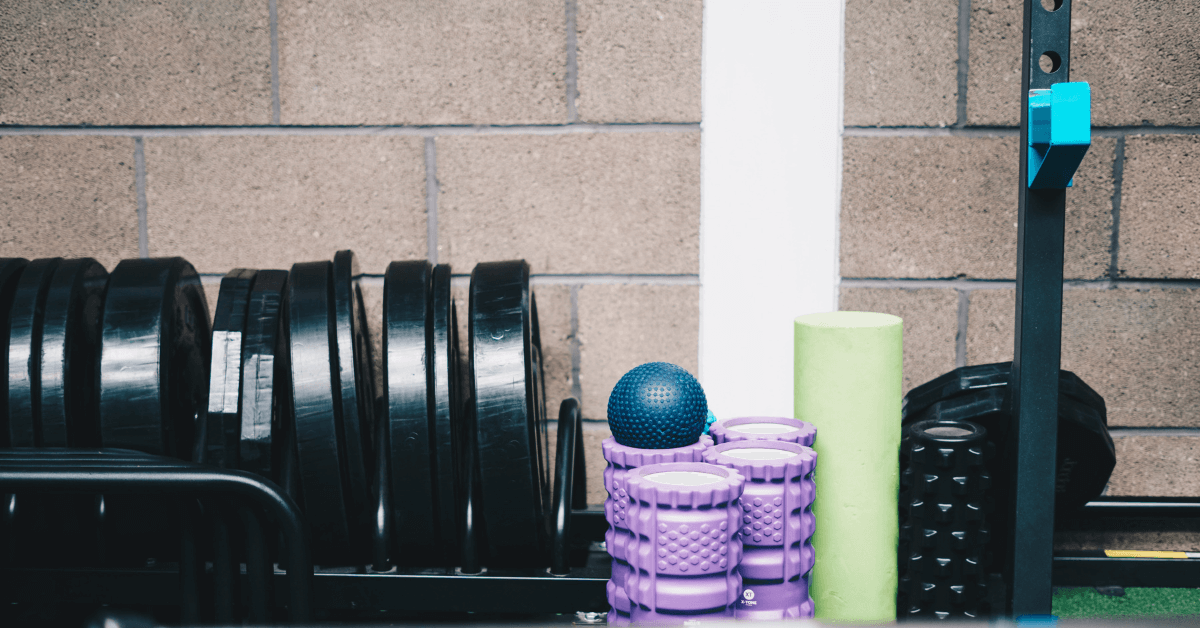
13 Oct 5 Practical Tips for Physical Therapy with POTS
There are lots of ways to go about reducing the symptoms of postural orthostatic tachycardia syndrome (POTS), including lifestyle changes, medication, and even physical therapy. I had heard of people having success reducing symptoms through exercise and strength training, so when given the opportunity, I was excited to try working with a trained professional to develop muscle, stamina, and hopefully, increase my orthostatic tolerance (in other words, my body’s ability to be in the upright position).
Due to the fact that we live in a pretty rural area (and have limited options through insurance), I wasn’t able to find a therapist that was familiar with POTS. So this article isn’t one telling you what specialized physical therapy for POTS should look like, but rather a summary of my own experience, and a collection of tips that we found to help make the most of (and manage the risks from) exercising and building strength with a wonky autonomic nervous system. My physical therapist was awesome, and despite being handed a unique (and unfamiliar) case, she committed herself to learning about the illness and adapting on the fly.
What did physical therapy look like for me?
My physical therapist explained that the core principles of her work remain the same, regardless of if it’s POTS, sports injuries or anything else that brings a person through the doors – things like strengthening muscles, increasing stamina, building core strength, maintaining mobility, and expanding range of motion. So with those goals in mind, we did a combination of recumbent biking, stair-stepping, strength exercises with resistance bands, balancing on squishy surfaces, and core exercises with weights. It hadn’t occurred to me that drastically reducing my time standing and walking (for the sake of avoiding tachycardia and fatigue) would have such far-reaching impacts, but as we began trying different things it was clear that I had lost significant physical ability. For example, I found that 10 marches (you know, slowly lifting up your leg with knee bent, taking a step, and repeating on the other side) completely wiped me out and produced sore legs the next day. I also found that even balancing in one spot with feet together became quite difficult, and I often needed the support of the railings next to me. One single minute on a stationary bike resulted in a heart rate of 140 bpm. And yet, with slow and intentional persistence, we engaged my muscles, “woke up” the nerves in my legs, and did our best to expand my stamina without causing harm.
5 Tips
After a few months of weekly sessions, we discovered adjustments that made physical therapy safer, and more beneficial for a potsy like me. If you’re in the same boat, working with a physical therapist for POTS and learning to navigate the condition’s limitations, here are my quick tips:
1. Less is more.
Don’t feel you need to fill the whole time with exercise. My physical therapist allotted 45 minutes, but we found this to be way too much, especially in the beginning, so we backed it down to about 20 minutes. It was crucial to remember that I am doing this for the benefit of MY health, and so I need to speak up when we have hit my limit, even if it’s only after 10-15 minutes. The goal is to gently build stamina, not destroy your body twice a week. So tip #1: Less is often more.
2. Sit when possible.
There are three ways to do strength/resistance exercises – standing, sitting, and laying down. If you have POTS, you can understand how doing exercises while standing could precipitate symptoms, and the natural assumption might be that doing them while laying down could be a best choice. Unfortunately, we found that while I was able to do more and felt better while laying down, getting up was a challenge. Even slowly making the transition resulted in a pretty intense flare that heightened my symptoms for multiple days.
I’m able to exercise horizontally while at home, but that’s because I can stay flat for 20-60 minutes afterward and THEN slowly get up. Apparently, this lag time is critical for me.
The solution for us was to do most of the strength exercises while sitting, in order to split the difference between lying and standing. While sitting still causes some symptoms for me, it was a necessary concession and created a better outcome upon leaving the appointment than either laying or standing.
3. Have a chair nearby for standing exercises.
For exercises that require standing (like stair-stepping, balance, marches, etc) we found that it was important to have a chair nearby. Collapsing to the ground can tend to be stressful. It couldn’t always be avoided (as in the case of a swift onset), but we tried to minimize the risk of incident by taking small breaks after each set and being mindful of the day’s limits.
4. Bring water.
Symptoms can strike unexpectedly, especially during physical exertion. Water is crucial to the everyday management of POTS due to its role in expanding blood volume and maintaining circulation, and it’s even more important to stay hydrated during physical therapy. For bonus points, drink a whole bottle in the hour leading up to your appointment (and have a salty snack!). And as you start noticing presyncope (near-passing out) during the appointment, chug some more. You likely already know this but here is a reminder – with POTS, water is your friend.
5. Be honest about other problems too.
One day, I showed up to physical therapy wearing sunglasses and moving a bit slow. Having previously talked about how I get migraines, my physical therapist immediately brought us to a secluded room, kept the lights off, and spoke in hushed tones. Her generosity and care was incredibly heartwarming, and it helped me see that treating POTS sometimes looks like making accommodations for my other issues too.
Maybe for you it’s mast cell activation syndrome or hypermobility, but whatever the case, I encourage you to not only think of POTS but to keep in mind limitations that may come from your comorbid conditions. Work with your therapist to find the best plan for your unique circumstances, and stay flexible when it comes to navigating to flares (noting that sometimes adapting the exercises is good enough, and other times you might need to cancel or reduce the appointment for your own wellbeing).
Summary
After mixed success with my initial foray into medications for postural orthostatic tachycardia syndrome (POTS), I asked my doctor what she thought about trying physical therapy in the gap before I would be able to see a specialist. With nothing to lose, I embarked on the adventure, and am grateful to my physical therapist for helping me explore my limits and navigate exercise.
During our final appointment, we did a brief evaluation comparing my strength, stamina, and symptoms to when we first began. I definitely noticed that my overall ability to be upright had improved, specifically when it comes to sitting. Instead of one hour of sitting (before needing to lay down or change positions), I was starting to notice I could be up for multiple hours and not have acute symptoms. In all honesty, most of my other metrics didn’t improve dramatically, but I am still grateful for the opportunity to give physical therapy a try. My therapist gave me real-time feedback on posture/form, offered accountability, took the time to answer my burning questions, and even helped with practical things like fitting me to my cane (check out my article discussing why I use a cane here). My body is slowly rising up to meet the demands of living a healthy life (like keeping up with my puppy!), and I very much look forward to seeing how additional treatment enables me to further engage with strength training and stamina-building to live a more active and robust lifestyle.
{I will be going to Mayo Clinic at the end of October 2023, and part of my time there includes attending physical and occupational therapy for POTS. Stay tuned for more articles that discuss that experience and share more about what I learn about POTS-specific exercises.}
-
Making a Full Physical Recovery – A Day-by-Day Miracle
“You should exercise more.” A brutal statement. One I had tried to fulfill on my own, and time and time again, had failed. It was a frustrating piece of advice from my doctor, and felt so out of reach as I navigated my bouquet of chronic illnesses....
27 June, 2024 No comment -
Awesome Recovery News!! And Why I No Longer Plan To Write About My Symptoms
I am so excited to report that after graduating from the 3-week Pain/Symptom Rehabilitation Center at Mayo Clinic in Rochester and continuing the program at home, I am nearly 100% recovered!...
05 March, 2024 3 Comments -
What is the Valsalva Maneuver like?
The Valsalva maneuver is EASILY the most fascinating thing I’ve gotten to do in this entire medical adventure. On the surface, it’s a fairly quick and easy part of autonomic testing, but underneath, it’s one of the coolest and most complicated mechanisms of the human body that I’ve encountered. ...
17 January, 2024 3 Comments






Pingback:POTS Treatment Summary - Metoprolol and Propranalol (Part 3 of 3) - Kaley Faith
Posted at 20:44h, 22 October[…] a POTS specialist at Froedtert in January 2024. In the meantime, my doctor agreed to refer me for physical therapy to see if that can be of benefit, and I am seeking out alternative options for sooner […]
Pingback:Why I Use a Cane With POTS - Kaley Faith
Posted at 12:11h, 26 November[…] I acquired my cane from Walmart and got the $8 polka dot, lightweight and adjustable cane in the pharmacy section. As I mentioned before, my first few experiences were not overly positive, but once I started going to physical therapy I pulled it out again. I figured if there was anyone who could help me decide on its helpfulness once and for all, it would be my new physical therapist (read more about my experience with physical therapy here). […]